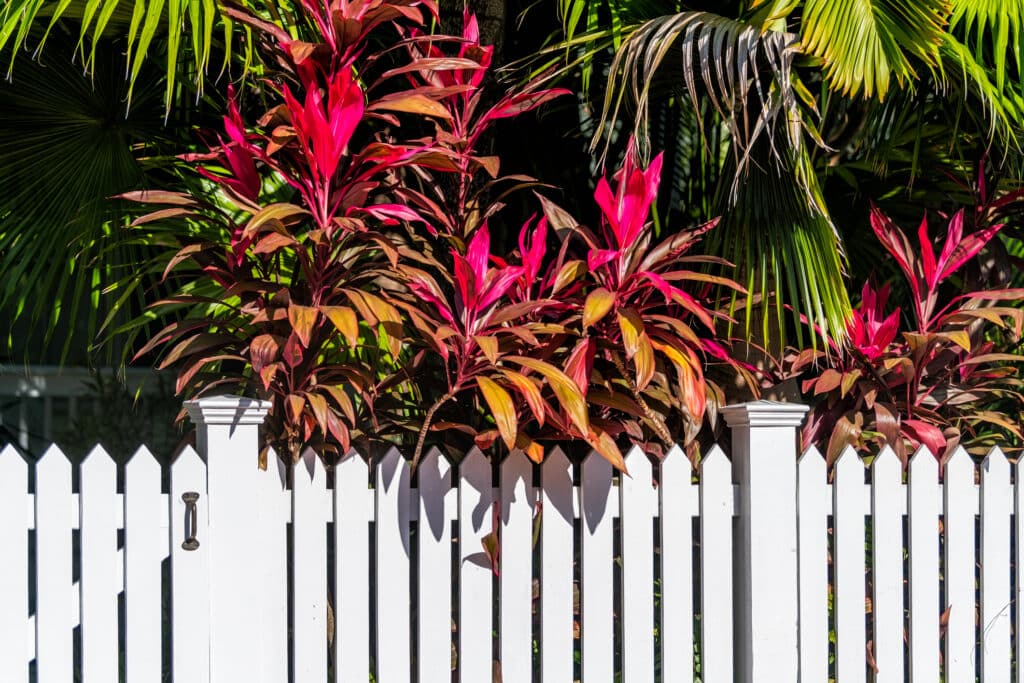Protecting your property from hurricane damage involves more than just securing windows and doors. Strong winds and heavy rain can easily break the fencing you use for security and produce dangerous debris that can cause serious consequences. Whether you’re looking to install a new fence or reinforce what you already have, starting with durable materials will provide you with the protection you need this hurricane season.
What To Look for in a Hurricane-Resistant Fence
There are a few things to consider before deciding on the ideal fence style and material for your property. Hurricanes produce strong winds and heavy rain that soften the soil, which can cause fences to be uprooted if the foundation is weak. It’s always important to anchor your fence posts deeply in the ground. Look for fencing companies that offer concrete foundations for extra staying power.
Exposure to water, sun, and extreme temperatures can weaken some fence materials over time. To mitigate this, inspect your fence regularly and stay on top of routine maintenance. Make sure the ground isn’t heavily saturated along the fence for extended periods of time, as this can increase the likelihood that it will lean or collapse under heavy wind.
It’s also critical to pay attention to wind ratings. For example, while aluminum might sound like a hardy material to use for fencing, it can only withstand wind speeds of up to 115 miles per hour (mph) without reinforcements. This might be enough to hold up against a category one or two hurricane, but category three can produce wind speeds of up to 129 mph and cause devastating damage.
Chain-Link Fences
Chain-link fences may not be the most aesthetically pleasing, but they’re an affordable solution. The sturdy galvanized steel used to make these fences is effective against corrosion and requires minimal maintenance. One of the reasons chain-link fences are so effective in hurricane zones is because their open design allows air to flow freely through the interlocking metal wires.
This minimizes the pressure of strong winds and reduces the risk of damage. And if you’d like a little more privacy when the weather is nice, it’s easy to reinforce your chain-link fence with slats that you can remove as needed.
Composite Board-on-Board Fences
Wood fencing is a classic option many homeowners prefer for its natural look. Unfortunately, wood is susceptible to water damage and wind breakage. A better choice is a composite board-on-board fence made of wood and plastic materials. Composite fences mimic the look of traditional wood by combining plastic and wood fibers. These materials are moisture resistant, so you won’t have to worry about your fence warping, rotting, or developing mold if you live in a humid climate.
They’re also resistant to termites and UV rays. Most importantly, composite board-on-board fences can be crafted with reinforced materials to withstand the impact of hurricanes. These materials also add flexibility, so your fence is less likely to break or bend under pressure.
Wrought Iron Fences
Wrought iron fences are an extremely durable option. However, when there’s moisture and high humidity, this material can rust. You can prevent this by treating your fence with a powder coating or opting for galvanized wrought iron panels. Anchor your fence posts firmly in the ground to prevent them from being uprooted. Wrought iron fences can provide substantial resistance against heavy winds and debris with the right maintenance.
Masonry Fences
Masonry fences have a certain permanence to them that exudes strength. Their dense nature can withstand high wind pressure and the impact of flying debris during hurricanes. There are also a few unique qualities that make masonry fences well-suited for harsh weather conditions. Brick, stone, and concrete are moisture- and flood-resistant. This makes them excellent building materials in coastal and hurricane-prone regions. And as an added bonus, these materials are fireproof.
Reinforced Vinyl Picket Fences
While standard vinyl fences might not be able to hold their own against a hurricane, reinforcing them with aluminum or metal inserts gives them enough stability to withstand severe weather conditions. Vinyl fences are made from a flexible material called PVC that absorbs the impact of heavy winds. It’s also moisture, pest, and UV resistant. However, vinyl may become brittle over time or warp due to extreme temperatures. Maintenance tasks are generally pretty minimal, but it is important to pay attention to the structural integrity of your fence as it ages if you select this option.
A Side-by-Side Comparison of Hurricane-Resistant Fence Materials
Let’s recap by comparing the best fence materials for hurricane-prone areas side-by-side so you can choose the right option for your property.
- Chain-link is a low-cost option that resists corrosion and allows wind easily to pass through its open weave. However, it offers limited privacy and may not match your home’s aesthetic.
- Composite fences can help you achieve a natural wood look with extra durability and minimal upkeep requirements. However, the upfront costs may be higher than other materials.
- Wrought iron offers long-lasting durability and gives you the option to select more ornate designs. However, iron is an expensive material that requires periodic maintenance and minimal privacy.
- Vinyl is a low-maintenance alternative that won’t rot or corrode. However, it can become brittle in extreme temperatures.
- Brick and stone fences are extremely storm-resistant, moisture-proof, and fireproof. However, masonry is labor-intensive and may be more expensive.
Final Recommendations To Stay Safe This Hurricane Season
Before you install a new fence or make any updates, check your local regulations and zoning laws. Some areas have rules that dictate the types of fencing residents are permitted to install. This might include specific guidelines for the height and placement of your fence and what materials you can use to build it. Consult with a professional in your area to have them assess your landscape. The layout of your property, elevation, and soil stability all play a role in how durable the final construction will be.

